SUMMARY
This is AI generated summarization, which may have errors. For context, always refer to the full article.
![[OPINION] Projecting military power: Japan’s carrier fleet reborn](https://www.rappler.com/tachyon/r3-assets/612F469A6EA84F6BAE882D2B94A4B421/img/BD554CC411954D8684DF6F591581227D/japanese-aircrafts.jpg)
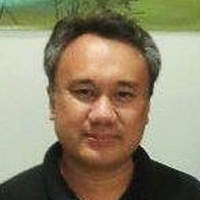 Akagi, Kaga, Hiryu, Soryu, Zuikaku, and Shokaku. Names of proud ships that once ruled the waves of the Pacific and Indian oceans. Warships that struck terror among the enemies of Imperial Japan. They made up the powerful core of the Imperial Japanese Navy which was called Kido Butai (Mobile Force). These carriers delivered devastating blows against the naval units of the Allied Powers and, by mid-1942, had brought almost one-third of the world’s oceans and seas under Japanese rule. However, a few days into June 1942, the American victory at Midway resulted in the sinking of Akagi, Kaga, Soryu, and Hiryu.
Akagi, Kaga, Hiryu, Soryu, Zuikaku, and Shokaku. Names of proud ships that once ruled the waves of the Pacific and Indian oceans. Warships that struck terror among the enemies of Imperial Japan. They made up the powerful core of the Imperial Japanese Navy which was called Kido Butai (Mobile Force). These carriers delivered devastating blows against the naval units of the Allied Powers and, by mid-1942, had brought almost one-third of the world’s oceans and seas under Japanese rule. However, a few days into June 1942, the American victory at Midway resulted in the sinking of Akagi, Kaga, Soryu, and Hiryu.
The tide of battle had turned. Though the Imperial Japanese Navy still had a lot of fight left in it and was not to be underestimated, its carriers were being sent one after the other into deep watery graves by the Allied Powers. Even the launching of the largest carrier in World War II, the Shinano, could not help Japan stave off defeat. Shinano itself was sunk in its first ever voyage. By mid-1945, most of the Japanese carriers were battered by incessant Allied air attacks on the remaining Imperial Navy bases in the home islands of Japan.
Imperial Japan’s last aircraft carrier
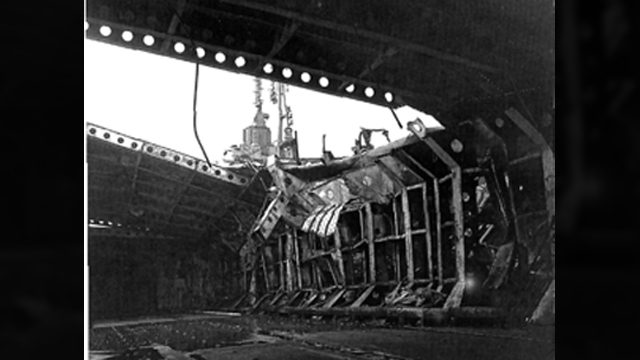
There was still one survivor of the Imperial Japanese carriers. The Katsuragi was the last wartime operational carrier of Japan and it survived the initial postwar scrapping of Imperial Navy ships because it had one mission to undertake. It had never seen action during the war and it had been partially damaged at Kure, where it was camouflaged and docked. Hastily repaired, it was given the task of repatriating thousands of Japanese soldiers and civilians from the far-flung reaches of the defunct Greater East Co-prosperity Sphere. Katsuragi made several trips and was decommissioned in mid-1946 and scrapped later in the year.
That Strange Osumi
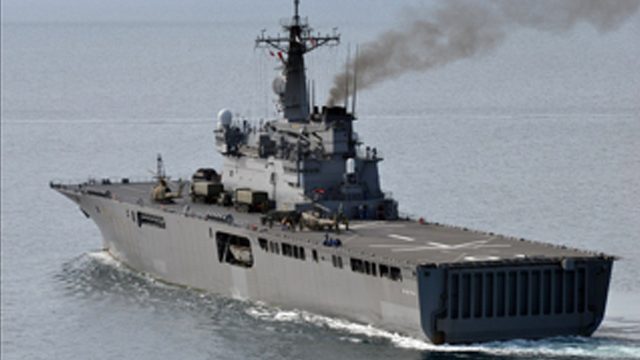
For half a century, Japan would not have anything remotely resembling an aircraft carrier in its Maritime Self-Defense Force (JMSDF). The postwar Constitution forbade anything that would appear to be aggressive in the Japanese Self-Defense forces. This was up until the commissioning in 1996 of LST 4001 that was given the name Osumi.
Changing post-Cold War realities forced the Japanese to rethink their excessively defensive posture and instead adopt a power projection capability. The Osumi is a small ship, but what makes it unique is that it has a flight light deck that runs the length of the ship. Although it is classified as an amphibious warfare ship and can disgorge two Landing Craft Air Cushion vehicles and 10 main battle tanks, it can operate several helicopters on its flight deck. Osumi was then followed by Shimokita (LST 4002) and Kunisaki (LST 4003).
The Hyuga and Ise
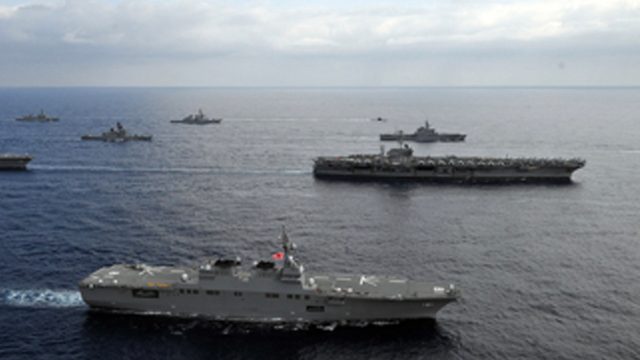
This class was named after two Imperial Japanese Navy battleships that had been converted into hybrid battleship/carriers during the war, the Hyuga and Ise. The Hyuga (DDH 181), which was commissioned in 2009, had all the appearances of a light aircraft carrier, but again because of Constitutional restrictions and political sensitivities, the Japanese designated this as a helicopter destroyer.
Other countries that did not share the political sensitivities of Japan flat out called the Hyuga a helicopter carrier. Hyuga was significantly larger than the Osumi class by an additional 63 feet but radically departed from the latter in terms of role. Whereas Osumi is an amphibious operations ship, Hyuga and its sister ship Ise (DDH 182) are both purely aircraft carrier vessels, although they are designated as destroyers, which they really are not, though they have limited missile attack capability. Their real strength is seen in their capability to load up a squadron of aircraft, either helicopters or possibly V22 Osprey tiltrotors. The Hyuga class has seen service in humanitarian assistance and disaster relief operations in Japan during earthquakes there, and in the Philippines in the aftermath of Super Typhoon Yolanda, when the Ise was deployed to Leyte.
Izumo and Kaga
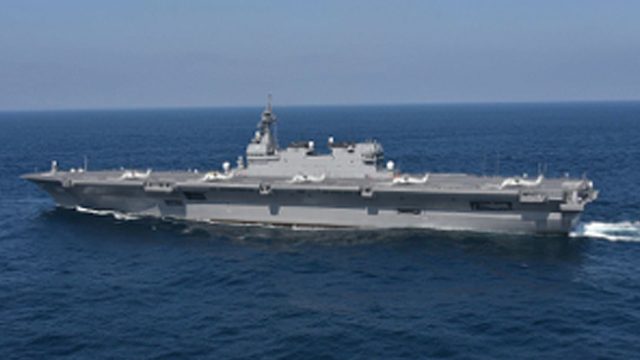
In 2015, the Japanese commissioned the Izumo (DDH183) into the JMSDF as a helicopter destroyer. It is the first in a class of two ships; the latter one is named Kaga (DDH 184). Kaga is an interesting name as this was the name of an Imperial Japanese Navy fleet carrier that sank in the Battle of Midway.
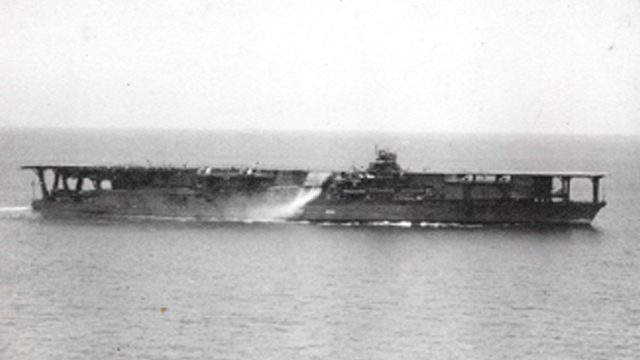
Longer by 168 feet than the Hyuga class, the Izumo class ranks as the largest warship built in Japan since the end of the Second World War. It is 814 feet long and 125 feet wide, making it as large as Second World War Two Imperial Japanese Navy and US Navy fleet carriers. It carries 14 helicopters that are dedicated to anti-submarine operation, thus continuing a long tradition of the JMSDF in Anti-Submarine Warfare.
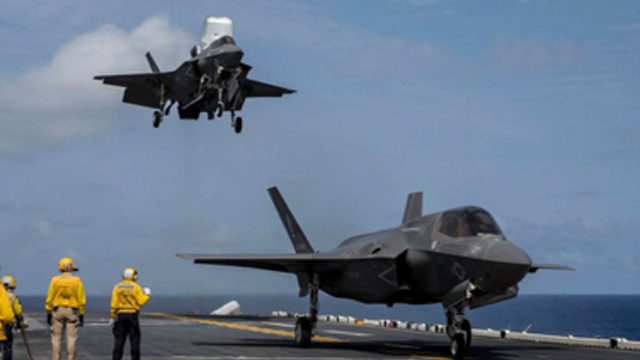
However, in December 2018, the Japanese had announced that at least one member of the Izumo class would be adapted to carry the F35B vertical take-off and landing multi-role fighter. If this plan materializes then it would put Japan back into the aircraft carrier business and all pretentions on the Izumo and Hyuga classes will be set aside. Interestingly enough, since their commissioning, both the Izumo and the Kaga have participated in exercises together with US Navy carrier battlegroups. In many instances, though, both the Izumo and the Kaga participate in freedom of navigation operations at the East and South China Seas and show the flag in countries that these ships pay port calls to. It is because of these that both Izumo and Kaga have come to the Philippines.
The Izumo class visits the Philippines
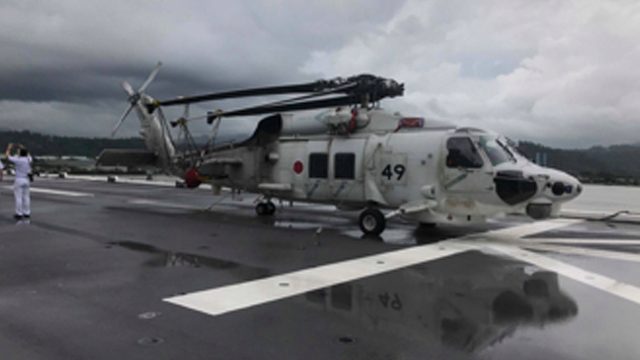
Japan seems to be especially proud of the Izumo class, and the ships of this class have visited the Philippines 3 times already since 2017 – Izumo twice and Kaga once. In their visits to the Philippines, they are docked at Subic, which does not make it that easy to visit coming from Metro Manila. Subic is the preferred choice because its deep harbor is perfect for such large warships.
Last June 30, Izumo arrived at Subic on a 3-day goodwill visit following exercises at the South China Sea and West Philippine Sea. On July 1, it hosted a by-invite-only reception, where guests were treated to Japanese cuisine, tradition, and culture, and of course a tour of the ship.
Entering the ship for that event was done through the lowered aircraft elevator at the starboard side, and one gained entrance into the huge hangar. The hangar had been turned into a reception area and most of the helicopter complement was not present in the ship, except for two vastly improved and lengthened versions of the SH 60 Blackhawk built by Mitsubishi that are configured for ASW. From the hangar, the delegation proceeded to the flight deck that, as of now, is still configured to carry helicopters and, if need be, V22 Osprey tiltrotor aircraft.
In the next few years, Izumo or Kaga will be configured into a dedicated aircraft carrier. It is possible that the other, including the Hyuga and Ise, may also be reconfigured to operate the F35B. Once that happens, Japan may add at most 4 light carrier groups to the dozen carrier strike groups the US Navy already has, thus further emphasizing the quantitative and qualitative superiority that these two allies have over China. It’s an overwhelming superiority that is sure to keep Beijing in check at the East China and South China Seas in the decades to come, and which belies Rodrigo Duterte’s claims that China is more powerful than those arrayed against it. – Rappler.com
Jose Antonio Custodio is a security and defense consultant. He specializes in military history and has post-graduate studies in history from the University of the Philippines. He occasionally teaches history and political science in several universities in Metro Manila.
Add a comment
How does this make you feel?
There are no comments yet. Add your comment to start the conversation.